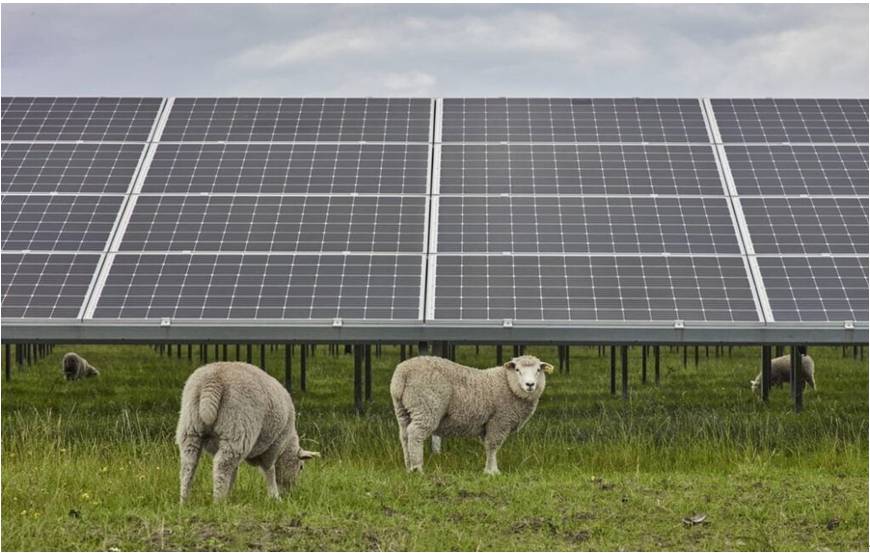In Western Europe, past and future elections are making waves.
Western Europe is the birthplace of many leading companies in the solar industry on the European continent. According to the latest EU Market Outlook Report (covering 2023-2027) released by industry organization SolarPower Europe, Western Europe accounts for 5 of the 14 GW-scale markets in Europe, namely Germany, the Netherlands, France, Austria and Belgium, none of which exceeds Germany. By the end of 2023, the total installed capacity of these five countries will reach 81.7GW.

Next, we will make a series of analyses and policy interpretations on the photovoltaic powerhouses in Western Europe.
Germany: 400GW by 2040
Carsten Körnig, managing director of Germany’s national solar association BSW-Solar, told PV Tech Power: “Solar has been the most popular form of energy in Germany for many years. With 15GW of new PV installed capacity in 2023, this has almost doubled compared to the previous year.”
Körnig noted that from 2026 onwards, the government’s goal is to add 22GW of new capacity per year, which would bring Germany’s total PV installed capacity to 215GW by 2030 and 400GW by 2040. Crucially, these targets are consistent with those in Germany’s latest National Energy and Climate Plan (NECP) submitted by the German government to the EU, with Germany’s 215GW solar target being the highest in Europe to date and more than double Italy’s 80GW PV target, the second most ambitious country.
Netherlands: Benefiting from supportive legislation, subsidies
The Dutch solar industry has also benefited from a growing distributed sector.
In 2022, the rooftop solar sector alone added 1.8GW of installed capacity, accounting for 46% of new capacity added that year, pushing the Netherlands solar sector's total installed capacity to surpass France by the end of 2023.
SolarPower Europe expects this growth to remain stable in the coming years, with new rooftop capacity expected to reach 1.6GW in 2023 and 1.8GW in 2024. As in Germany, the sector has also benefited from supportive legislation, such as the Sustainable Energy and Energy Efficiency Investment Grant, which this year saw its funding increase to €600 million to subsidize the costs of equipment such as heat pumps and solar panels.
Importantly, SolarPower Europe reported that in 2023, the sector achieved a "negative average subsidy level", meaning that the government no longer loses money by providing financial support for new solar facilities, a situation that will encourage governments to provide more support for solar. Likewise, in February 2024, the Senate rejected a proposal to phase out net metering schemes, a move that was praised by Juan Monge, lead analyst for European distributed solar at analyst firm Wood Mackenzie.
France: 65GW by 2030
France is Western Europe’s third-largest solar market, with around 20GW of operating capacity and 3.1GW of new capacity added in 2023. This is a record for France, surpassing the previous annual installed capacity record of 2.8GW set in 2021, and is about three times the total annual installed capacity from 2012-2019, which never exceeded 1.02 GW.
The French Renewable Energy Association has also set a series of ambitious targets for the solar industry, striving to reach 65GW of operating capacity by 2030 and 115GW of installed capacity by 2035. These figures are more ambitious than the national renewable energy plan submitted by France to the European Union and will help France regain its top two position among Western European countries.
Making solar an attractive investment target has been a priority for the government, which hopes to encourage private investment into the industry to achieve some of these goals. The government plans to hold tenders for 3.2GW of new solar projects each year, and while these tenders have historically been undersubscribed, the government held tenders in September 2023 for 129 projects totaling 1.5GW, setting a new record for tendered capacity.
Less mature markets: Austria, Belgium
In addition to the three major solar markets in Western Europe, smaller solar markets, led by Austria, have also achieved considerable growth.
Austria broke the 1GW threshold for the first time in 2022, expanded its total PV installed capacity to 6.2GW in 2023, and plans to achieve a cumulative installed capacity of 41GW by 2040.
The Renewable Energy Expansion Act passed by Austria in 2021 stipulates that by 2030, Austria's electricity consumption must be 100% met by renewable energy needs. The law aims to achieve 27TWh of renewable energy generation by 2030, of which 11TWh must be solar power.
To achieve these goals, the Austrian government has significantly increased PV subsidies, with financial support increasing from about 110 million euros (118.5 million US dollars) in 2021 to 600 million euros (646.5 million US dollars) in 2023, almost six times. The government also supports 700MW of new capacity per year through a Contracts for Difference scheme.













 Soporta red IPv6
Soporta red IPv6